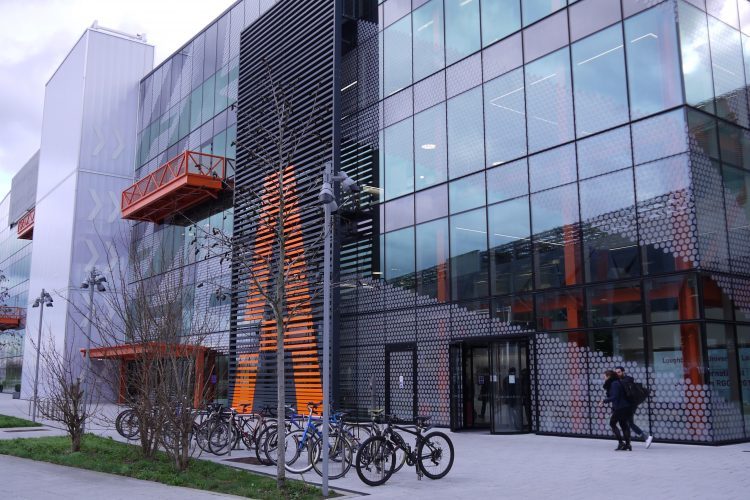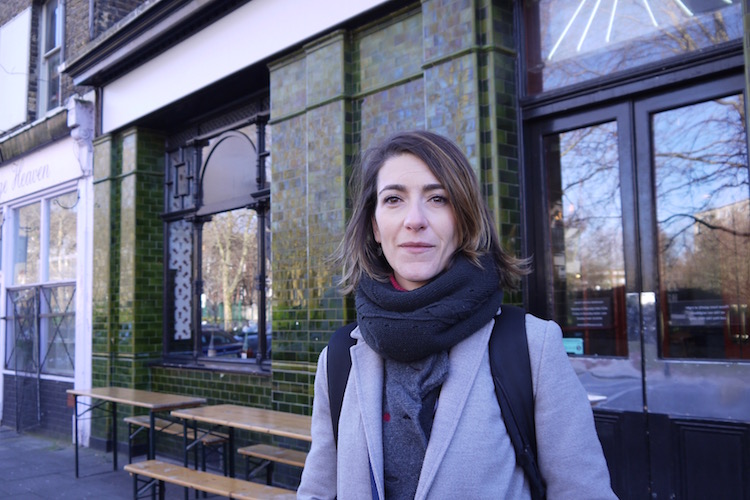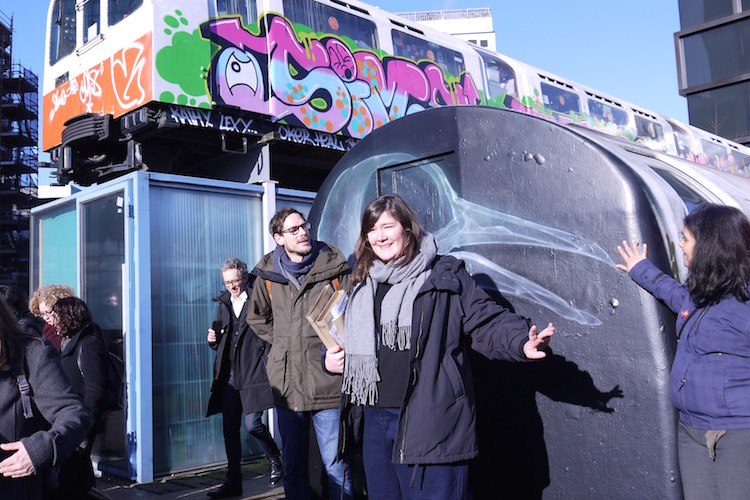These researchers “contaminated” by the maker spirit
Published 23 January 2018 by Elsa Ferreira
The second symposium of RGCS, international network of researchers around collaborative workspaces, took place in London on January 18-19. Or how university lecturers studying co-working begin co-working…
London, from our correspondent (text and photos)
For researchers, makers and hackers are not subjects like any other. “We want to have fun, do and not only talk, but most importantly, we want things to make sense. We are the kids of the academic world. I love talking with makers and hackers, I have never learnt so much,” affirms François-Xavier de Vaujany, the very cheerful director of the Research group on collaborative workspaces (RGCS).
This professor at Paris-Dauphine university is at the initiative of RGCS, created in 2014—even though imbued with the collaborative spirit, he prefers to highlight the collective effort of the network. The starting point is a group of university lecturers based between London, Montreal and Paris who share an interest for “co-workers, makers, fabers and hackers,” he says. “We had the intuition that organizational systems were no longer the same: everything was more open, more fluid. It intrigued us, the frameworks we used to employ to understand did not function.” Very quickly, the research group turned into a network, with its website, its social networks and its local branches called chapters. RGCS is now present in nineteen cities, from Singapore to Grenoble, including Berlin or New York, and unites around a thousand people.

Their second symposium around the theme “Coworkers, makers & hackers: true opportunities to renew company and entrepreneurship practices?” took place on January 18 and 19 in the former media center of the London Olympic park that now accommodates Loughbourough University. Already in 2015, during the first symposium in Paris, the group studied work transformation. “It’s a line that often comes back. This tension between a vision, a utopia, the search for social inclusion, activism and the political aspect on one side and the managerial aspect on the other with vocabulary such as business model, profitability, sponsorship…” For many researchers, details the director of RGCS, makers or co-workers are “a window, a microcosm of something else bigger: work transformations, freelancers, communities, the new forms of entrepreneurship”.
Is co-working a swear word?
In the course of the presentations in Pecha Kucha format (20 slides of 20 seconds for 6mins40 exactly), the researchers bring up their research. There is talk about rural co-working, the impact of 3D printing on entrepreneurship (less risks for the entrepreneur and more finished products thanks to a longer development) or still about the impact of negative and constructive feedback on the development and the maturation of a project: the “creative shock” as named by Tuukka Toivonen and Onya Idoko, the researchers from University College London in charge of the study. “Creativity in a collaborative space is always a mystery”, announces Toivonen as an introduction, thus summarizing a popular subject of debate over these two days. We will remember the method of David Vallat, professor at Lyon-1 university who uses the strategy game Avalon to create collaboration among his students. “Status quo is chaos. If you want order, you have to organize yourself,” he clarifies.
For researchers, RGCS is the best way to keep abreast of ongoing research. “Publication deadlines can go from a minimum of one year to eight years for the most prestigious journals, explains Julie Fabbri, member of the RGCS board and assistant professor at EM Lyon business school. This is why practitioners do not read our articles: they are disconnected from real time. Our meetings allow us to discuss and improve our articles. Before, we were all very isolated.” Julie Fabbri would know: she was one of the first university lecturers to have carried out a study on co-working. “When I started my dissertation at the end of 2010, I wasn’t allowed to use the word “co-working” in my lab, it was like a swear word. The phenomenon was very new and more of a fad, a trend.” Since then, the practice has expanded, has being maintained over time and seeing the number of young researchers taking an interest on the subject, has become a very commendable object of study.

Hacked university lecturers
The network of researchers applies collaborative recipes to its community. As a result, in a usually compartmentalized university world, the RGCS was able to bring together the disciplines (urbanism, architecture, geography, sociology…) and even attract “practitioners”: architects, entrepreneurs, activists, artists or journalists who bring a different experience to the network.
“We are transformed when in contact with them,” reckons the PhD student Mickael Peiro, who, having rubbed shoulders with the very hierarchical world of luxury hotels and then NGOs, is studying the way in which decisions are taken and tasks distributed within activist social movements such as squats or hackerspaces. From observer, he turned to participant “to understand the meaning that actors give to tasks that they carry out daily but also in order to be fully accepted within the collective, he explains. Even though we weren’t particularly activist before walking through the door of a hackerspace, our numerous hours spent with hackers radically changed our way of understanding new technologies, our way of carrying out research, as well as our vision of society. A nice way of embodying the doing, in my opinion,” he adds.

Most importantly, the network is experimenting new methods: OWEE (Open Walked Event-Based Experimentations), “learning expeditions”, sort of thematic guided visits coupled with a networking rendezvous, live on Twitter. On Friday 19, participants went to the very arty district of Shoreditch. On the program: visit of the Barbican center and its brutalist architecture, the Village Underground and its co-working space set up in railway cars, thought out by the architect Nicolas Laurent, present the previous day at the meeting, or still the charming Columbia Street.

Walking encouraged discussions. “Michel Denisot (a French journalist, editor’s note) gave very good interviews while walking,” says Mickael Peiro to illustrate the method. “Steve Jobs also walked a lot for his difficult conversations,” mentions Olivier Piazza. As for François-Xavier de Vaujany, he was inspired by memories from the university of Bologna, the first classes of which were given while walking. “Each one of us puts in his or her emotional intuition,” he says. The strength of collaborative groups.
#Coffee, corners and conversations.
Our walking conference around East London about #Collaborative Spaces was epic.One of the most rewarding event formats I've taken part in for a long time. Thanks to @collspaces #RGCS2018 #eventprofs #coworking #artclub #shoreditchstreetart pic.twitter.com/7kqfXzmECd
— Bernie J Mitchell (@BernieJMitchell) January 19, 2018
The RGCS website and the schedule for events to come
